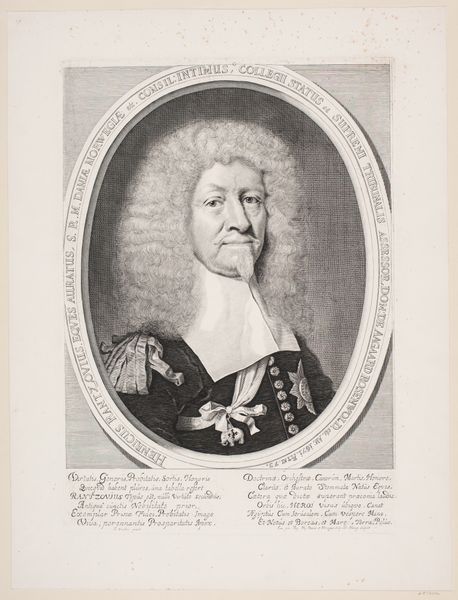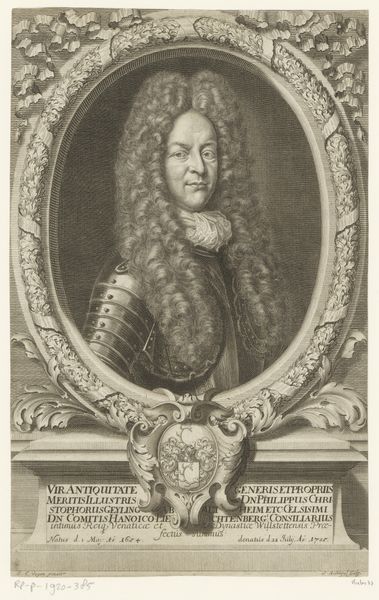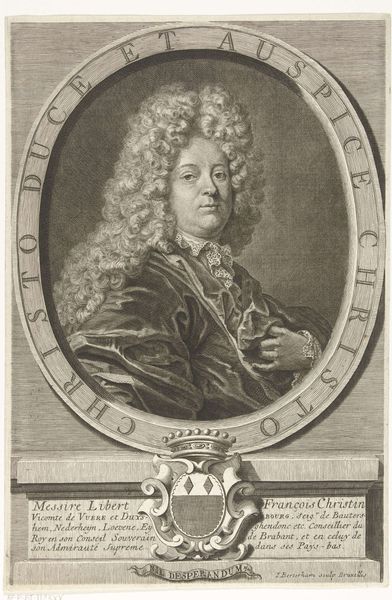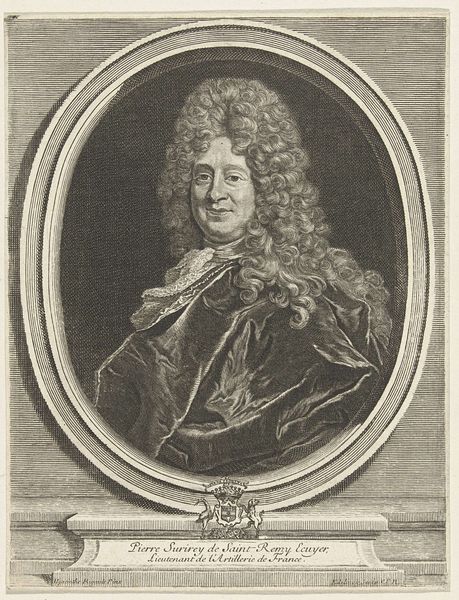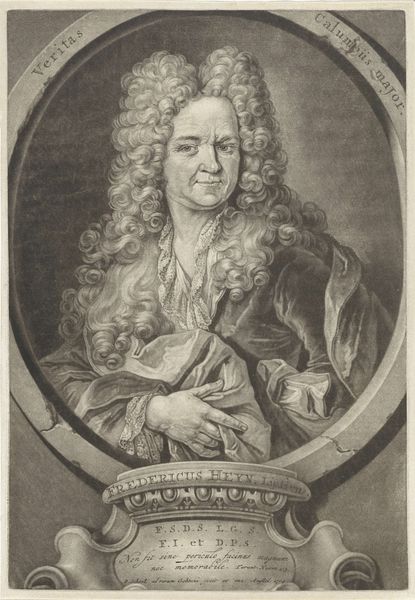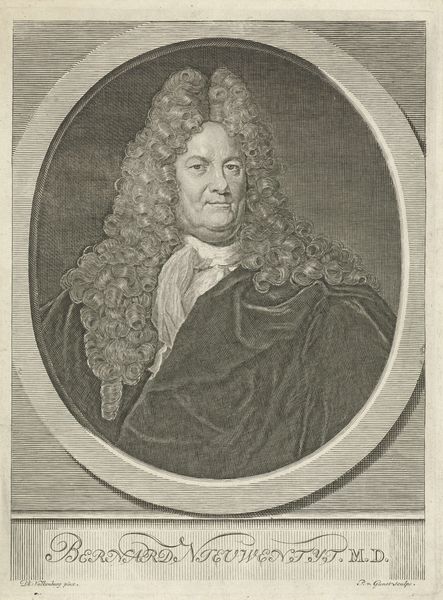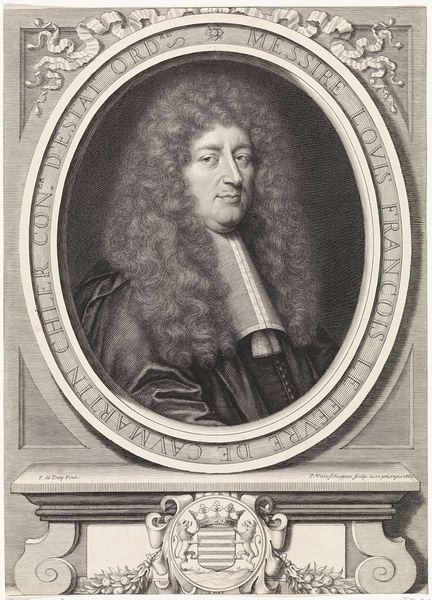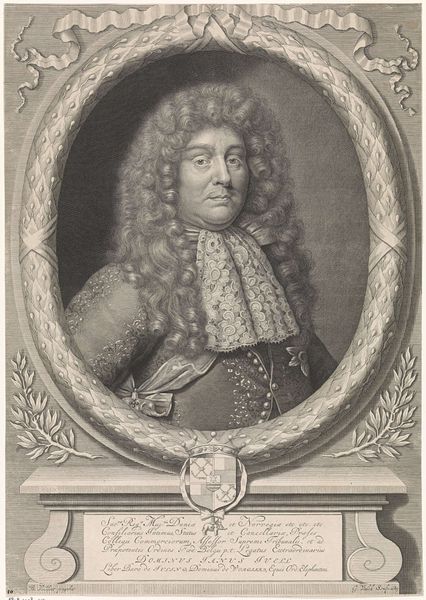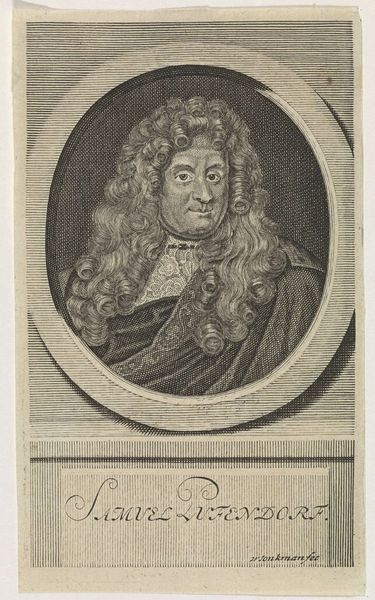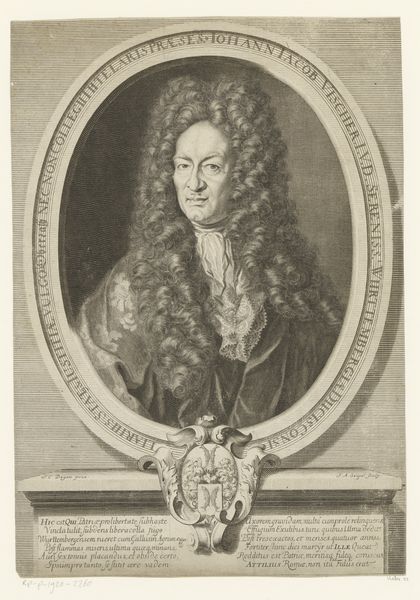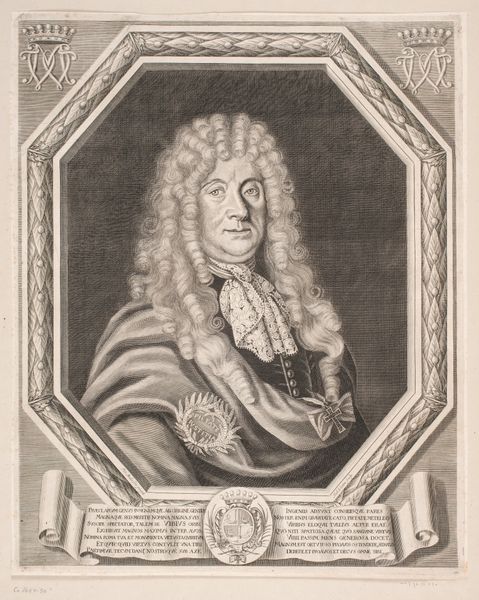
print, engraving
#
portrait
#
baroque
# print
#
old engraving style
#
portrait reference
#
engraving
Dimensions: 442 mm (height) x 309 mm (width) (bladmaal)
Curator: Let's turn our attention to this intriguing print from 1671. The portrait is titled "Henrik Rantzau," and it was made by Albert Haelwegh. What catches your eye immediately about this engraving? Editor: The wig, of course! That incredible cloud of hair feels like a force field surrounding the sitter’s face. But beyond the sheer drama, I’m struck by the density of detail—look at the crisp lines rendering the lace, the inscription, even the slight pockmarks on Rantzau's face. What was the print medium offering society at this moment? Curator: This particular print showcases the height of Baroque portraiture and reminds me of the culture of collecting in the 17th century. Portrait engravings like these made it possible to circulate images of prominent figures across Europe, serving as powerful tools for constructing and disseminating their reputations and the status they held. They almost became trading cards of fame. Editor: Absolutely! And let's consider the labor involved. Engraving is painstaking work—each line meticulously etched, each area of tone carefully considered. And all this to reproduce an image, to democratize access to a likeness. I imagine that Haelwegh probably never even saw the sitter. Curator: The formality and symbolism can also tell us a story. Henrik Rantzau, dressed in his finery, presents an air of cultivated authority, and it would have told contemporary viewers so much about who he was as an individual through iconographic details, status symbols and visual metaphors. To me, it really showcases how much Baroque era pieces played at illusion, using every tool at their disposal to play on surfaces. Editor: Yes, the carefully constructed image as a form of cultural currency! It really encourages me to consider the networks of artisans, printers, and distributors all playing their part in this whole economy. This image isn't just ink on paper, it represents countless hours of skilled labor! Curator: Agreed. Reflecting on the conversation we’ve just had, I’m really thinking about how powerful these types of works must have been as promotional tools. Editor: And for me, seeing it here just brings that back down to the simple physical fact of the materials—the ink, the paper, the press. You know, it really grounds it and takes some of the elitism down.
Comments
No comments
Be the first to comment and join the conversation on the ultimate creative platform.
